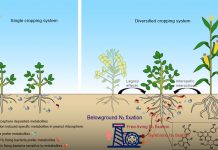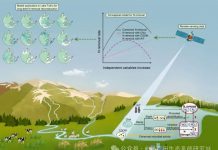Wang J Cheng Y Jiang YJ Sun B Fan JB Zhang JB Christoph Muller Cai ZC. Effects of 14 years of repeated pig manure application on gross nitrogen transformation in an upland red soil in China. Plant and Soil 2017 doi: 10.1007-s11104-016-3156-y
Abstract
Aims
Long-term application of pig manure can improve soil fertility and alleviate soil acidification but also increase nitrogen (N) losses in subtropical upland red soils. However mechanisms driving N losses via nitrate leaching or N2O emissions remain unknown. Herein we investigated long-term pig manure applications in upland red soils by assessing soil N transformation dynamics.
Methods
Pig manure was applied with or without lime over a 14-year period in four treatments: No manure (CK); Low-rate manure (LM 150 kg N ha−1 y−1); High-rate manure (HM 600 kg N ha−1 y−1); High-rate manure and lime (HML 600 kg N ha−1 y−1 and 3000 kg Ca(OH)2 ha−1 (3y)−1). 15N tracing was used to quantify gross N transformation and N dynamics.
Results
Prolonged manure application increased soil gross N mineralization and NH4+ immobilization although the increase was only significant for HM. Both rates were further enhanced by lime addition. Gross autotrophic nitrification also increased with increasing manure application and further increased with lime addition. In contrast dissimilatory NO3− reduction to NH4+ (DNRA) and NO3− immobilization were negligible irrespective of manure application. Thus NO3− produced via autotrophic nitrification was not converted to NH4+ and microbial biomass N and accumulated in soil. Gross autotrophic nitrification was positively correlated with N2O emissions and NO3− leaching suggesting it largely determined N losses.
Conclusions
Autotrophic nitrification governs N losses in upland red soils receiving repeated manure applications and attempts to reduce N emissions or N leaching should therefore control this.







